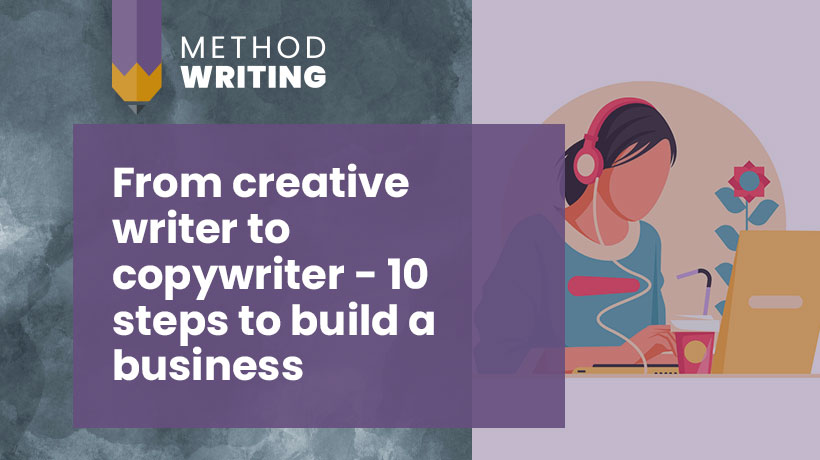Copywriting technique – 5 tips for authentic tone of voice
Tone of voice is an important element of copywriting technique, but achieving the right tone of voice is often instinctive, rather than the result of a deliberate strategy. This article suggests some ways to capture an authentic tone of voice and achieve livelier, more engaging results in your copywriting.
Tone of voice and deep listening
Hopefully you’re already interviewing clients, and some of their customers, too. But as well as deep listening with a view to capturing information, it’s important also to listen out for vocabulary.
Think of yourself as a radio journalist who is looking not just for facts, but also for good quotes to use in a broadcast. Note colourful and expressive language that would catch your ear in a programme. Pounce on anything lively and arresting. Sometimes, these phrases are attractive enough to be highlighted in a page layout or used as pull quotes.
When you speak to a client, take notes not just on the information they give you, but also on phrases and interesting snippets they say. These phrases are like nuggets of gold which can add colour and interest to your copywriting. For example, a hotel guest I spoke to described the surrounding mountains as “the bones of the earth showing through”. What a wonderful phrase!2
Encourage specific detail
Detail is the magic dust of writing. It helps bring the bland and boring to life. But often, interviewees are more used to providing facts than colour. Encourage them to go deeper and offer specifics, then capture the words they use.
I find a useful question for digging into colour is simply: “Tell me more about xx”. In this instance, it’s also OK to use leading questions such as: “It’s pretty big, then?” This can lead to more expressive words that give a better sense of the interviewee’s personality. “Yes, it’s ginormous!”
Other useful questions: “What’s special about xx?”; “What’s your favourite xx about xx?” and then follow up with “why?”, which can provide a more emotional response with engaging details.
All this note-taking quickly gets messy, and if you’re like me, you’ll struggle to unravel your scribbles afterwards. If so, use your phone and record the interview in audio form. Or get a voice recorder such as a Zoom H4N, and a professional microphone and cable.
Record audio interviews
Warning: recordings can go wrong, and then you’re left with nothing. Either use your recording as a backup and take full written notes, or meticulously check that the recording is running and working with each new interview. If the interview will be really irreplaceable, take a second sound source (eg using your mobile phone).
Things that can go wrong: batteries running out, pressing the wrong button, forgetting to save, messed-up transfer from SD card to computer. Also, SD cards are tiny and often stuffed full of other files, such as images and video.
If you plan to do a lot of audio interviews, it’s best to invest in a dedicated voice recorder and SD cards.
Listen to customer tone of voice
Your clients may have their own speaking grooves and a particular perspective that may be limited. Their customers can provide a fresh perspective, and one that’s closer to the market for your copy. Customers can also give you information that really helps the client’s business. For example, I found that “dog-friendly” was a big motivation for hotel guests, so we planned a new web page around it.
Listen out also for how the business and their clients refer to each other. Businesses may call their customers service users, residents, clients or visitors, depending on the sector. Customers may describe an eatery as a hotel, bistro, café or restaurant. These different words have a bearing on how customers talk about the offering to others, and can be useful for SEO (search engine optimisation).
Tone of voice and viewpoint
Tone of voice isn’t just about vocabulary and register – it’s also about viewpoint. With each copywriting job, first agree whether you’re writing in the first person or third – as the owner: (I sell gorgeous widgets), or in a reporting style (Acme Widgets was set up in 1994).
Beyond this, the owner may prefer the first person plural “we” (we’ve been around since the millennium). And they may have a preference about using “you” (we look forward to hearing from you). Most of us use “you” without a second thought, but some traditional sectors and people find it too informal and “chummy”, which may not suit their clients.
Passive voice is essentially another kind of viewpoint choice. We set up the business in 1994 suggests clear agency and people at the helm. The business was set up in 1994 obscures agency and a sense of specific people, and so feels more formal and detached. Passive voice is often used deliberately in the more litigious financial and legal sectors.
Each of these choices conveys a different message about the type of connection and formality the client wants with customers. So they’re important to tone of voice.
Ask for just three words
Sometimes, interviewee struggle to express themselves comfortably – which isn’t an issue, as that’s your job! But you can often get fascinating answers, ideas and even soundbites, by asking specific questions where interviewees are limited to just three words. This can help people to cut through the fog and articulate the essence of what they mean.
Save “three words” as your final question, and you may just hear something surprising and pithy that you can use as a pull-quote, caption or header.


